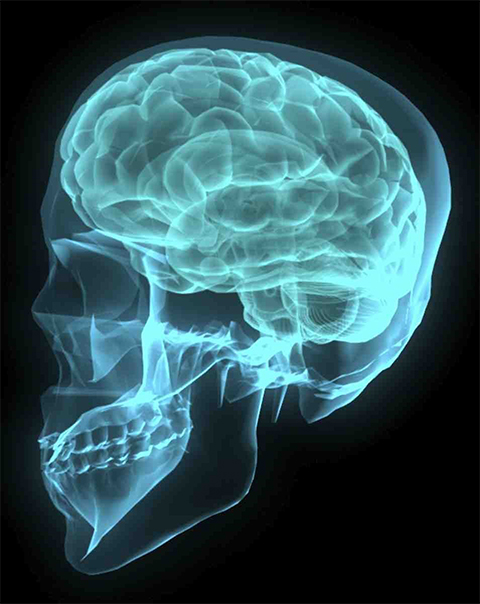From the Journals: JLR
Binge drinking and bacterial lipoprotein regret. How statins change lipid profiles in obese men. Read about papers on these topics recently published in the Journal of Lipid Research.
Binge drinking and bacterial lipoprotein regret

We can define alcohol binge drinking, or ABD, in terms of the number of alcoholic drinks consumed in a given period of time, usually four to five or more drinks on one occasion. ABD is associated with serious injury to the brain, gut and liver as well as risks due to cognitive decline in memory and thinking.
According to the Centers for Disease Control and Prevention, ABD is most common among women and young adults aged 18 to 34. ABD affects the gut microbiome, as it allows bacterial lipopolysaccharides, or LPS, a major structural component of the outer membrane of Gram-negative bacterial cells, to move from the gut to the bloodstream. Lipid A is the most bioactive component of LPS and a potent endotoxin. During ABD, lipid A aggregates and binds to various apolipoproteins, or Apo proteins, in the prefrontal cortex, or PFC, depending on the sex of the individual. Brain lipid A–Apo protein aggregates activate the immune system and can induce inflammation in the brain.
In a recent study published in the Journal of Lipid Research, Leticia López–Valencia of the University of Madrid and collaborators in Spain explored the effects of alcohol on the PFC and cerebellum of rats. The PFC and the cerebellum control cognition. The cerebellum is also responsible for coordinating motor movement and balance in mammals.
The authors reported that, upon oral delivery of ethanol, the rats showed elevated LPS-binding protein in the blood plasma equally in both males and females. Unlike in males, the female plasma ApoAI levels were elevated, and female brains contained aggregates of Lipid A with ApoAI in the PFC. In addition, males, but not females, showed Toll-like receptor 4, the immune cell receptor for LPS, upregulation in the brain.
These results suggest that alcohol introduces small bacterial components into the brain where they form aggregates with different apolipoproteins, which can drive intoxication. In conclusion, this study suggests that males and females have distinct signaling pathways that lead to neuroinflammation after ABD. Future testing of intoxication levels in males and females may require distinct benchmarks.
How statins change lipid profiles in obese men
Statin drugs reduce cholesterol synthesis and are used to reduce cardiovascular risk in patients with hypertriglyceridemia, or HTG, and elevated levels of very-low density lipoprotein, or VLDL. In patients with HTG, triglyceride breakdown is impaired, which causes VLDL accumulation. High triglyceride and VLDL levels increase the risk of developing atherosclerosis and related cardiovascular diseases. High-density lipoprotein cholesterol, or HDL-C, plays an important role in maintaining cholesterol levels, and it interacts with insulin to modulate glucose metabolism.
M. John Chapman of Sorbonne University and the National Institute for Health and Medical Research and collaborators examined the effect of prolonged pitavastatin treatment on HDL-C subclasses in the lipidome and proteome. The findings were published in the Journal of Lipid Research.
The authors compared the five classes of HDL-C–associated lipidomic and proteomic profiles of 12 nondiabetic, obese men with healthy, age-matched controls. The authors found that pitavastatin diminished apolipoprotein subclasses, which regulate the structure and transport of HDL-C. Men with prolonged pitavastatin treatment also showed increased levels of all HDL-C subclasses and normalized triglyceride and apoB lipoproteins levels, which are associated with arteriosclerosis.
This study suggests that increasing the HDL-C concentration using statins and other interventions in patients diagnosed with HTG is important for reducing their overall cardiovascular risk.
Enjoy reading ASBMB Today?
Become a member to receive the print edition four times a year and the digital edition monthly.
Learn moreGet the latest from ASBMB Today
Enter your email address, and we’ll send you a weekly email with recent articles, interviews and more.
Latest in Science
Science highlights or most popular articles

Bacteriophage protein could make queso fresco safer
Researchers characterized the structure and function of PlyP100, a bacteriophage protein that shows promise as a food-safe antimicrobial for preventing Listeria monocytogenes growth in fresh cheeses.

Building the blueprint to block HIV
Wesley Sundquist will present his work on the HIV capsid and revolutionary drug, Lenacapavir, at the ASBMB Annual Meeting, March 7–10, in Maryland.

Gut microbes hijack cancer pathway in high-fat diets
Researchers at the Feinstein Institutes for Medical Research found that a high-fat diet increases ammonia-producing bacteria in the gut microbiome of mice, which in turn disrupts TGF-β signaling and promotes colorectal cancer.

Mapping fentanyl’s cellular footprint
Using a new imaging method, researchers at State University of New York at Buffalo traced fentanyl’s effects inside brain immune cells, revealing how the drug alters lipid droplets, pointing to new paths for addiction diagnostics.

Designing life’s building blocks with AI
Tanja Kortemme, a professor at the University of California, San Francisco, will discuss her research using computational biology to engineer proteins at the 2026 ASBMB Annual Meeting.

Cholesterol as a novel biomarker for Fragile X syndrome
Researchers in Quebec identified lower levels of a brain cholesterol metabolite, 24-hydroxycholesterol, in patients with fragile X syndrome, a finding that could provide a simple blood-based biomarker for understanding and managing the condition.

